|
Review: Kinds of Kindness It’s strange to say that a director is ‘returning to form’ after their last movie - in this case, last year’s Poor Things - won prizes (Oscars included) across the globe. What I mean here is that Yourgos Lanthimos is returning to a kind of form that is reminiscent of the mood of his early films, such as Dogtooth. What does that even mean, though? Kinds of Kindness is an unsettling, experimental triptych that sees a return to writing with his collaborator Efthimis Filippou. All three stories share a cast, including Margaret Qualley, Joe Alwyn, Willem Dafoe, Emma Stone, Hong Chau, and Jesse Plemons. (One fun thing to note: much of the movie is shot in and around New Orleans, with scenes in The Windsor Court Hotel, and around the CBD). The basic plots are these: In part one, Plemons is in a subservient relationship to his boss, Defoe, who controls his every waking moment. In the second, Plemons is a cop whose wife (Stone) is rescued from a shipwreck but he’s convinced that she’s not the same person, and in the third, Plemons and Stone play members of a cult, led by Dafoe and Chau, who seek a divine being on Earth. All of the worlds depicted are familiar yet deranged, with violence, delusion and perversion all simmering under a superficially mundane surface. Lanthimos drops clues and details that overlap or hint at connections - a character referred to as “R.M.F.”, a fascination with dogs, his trademark stylistic weirdness and a brutal dissection of power dynamics. The events on screen - some surreally beautiful, some viscerally depraved, some psychologically scarring - allow for a real spectrum of readings. Some have floated that each one represents a particular religion (Islam, Judaism, Christianity), and there are dozens of theories already abounding in film discussion threads. The Lanthimos hallmarks are all there, and if you’ve enjoyed his pre-Poor Things work, especially his earlier Greek movies, then you’ll find lots to chew over here. Characters all speak in that clipped, removed way, and instances of socially unusual behaviour are mainly just accepted by everyone at face value. Although the photographic flourishes of Poor Things and The Favourite aren’t to be found, it’s nevertheless a provocative and unhinged film in other ways. People lose sense of themselves, whether through self delusion or control by others, and it can feel disorienting to watch, the sense of things only coming together with pieces that you’re not even sure are part of the same puzzle. The best summary of how the director sees humanity comes by extrapolating the lines of the opening song, Sweet Dreams (Are Made of This) by The Eurythmics: Some people want to use you. Some people want to get used by you. Some of them want to abuse you. And some of them? Some of them...want to be abused. (PO) Review: Hit Man
Richard Linklater’s (Dazed and Confused, Waking Life) latest movie is based on a strange true story. Co-written with its star and longtime collaborator, Glen Powell (Everybody Wants Some! Top Gun: Maverick), Hit Man relates some of the real life experiences of one Gary Johnson. Johnson, who died in 2022, was a philosophy professor in Houston, Texas. He lived a fairly ordinary life except for the fact that his love of electronics made him a surveillance whiz, and he ended up assisting the local police with select sting operations. The movie transfers Johnson to UNO, his colleagues (played by another long-time Linklater favorite, Austin Amelio, the comedian Retta and Sanjay Rao) being undercover cops working for the NOPD. Events conspire to take Johnson beyond the surveillance van and into the field, where he takes on the persona of a fake hit man so that would-be hits are nipped in the bud. In real life, Johnson became so good at this - wearing costumes and faking accents - that his success rate was off the charts. This success also fuels the fictionalized plot here, as movie Johnson meets an attractive wife, Madison Masters (played by Adria Arjona) who wants her abusive husband taken care of. Johnson dissuades her, falls in love with her, and hilarity ensues. Well, not really hilarity, more like confusion and layers of deception that make the situation more and more complicated by the day. Bodies start to appear, and holes start to form in everyone’s alibis. Amelio’s dirty cop starts to exert leverage that makes Johnson and Masters’ lives spiral out of control. It’s an almost Cohen brothers-type romp, with coincidences, near-misses and lashings of deft manipulation. One of the most enjoyable elements for us New Orleans residents is that it is shot across the city, with scenes in The AllWays Lounge, St Roch Tavern and a couple of Uptown restaurants as well as lots of street scenes. I also spotted more than a couple of local actors with lines - not least KC Simms and Tony Frederick doing our town proud. It’s a fabulist, exaggerated telling of Johnson’s life, and although the stakes feel real, the comedic thrusts of the establishing scenes keep this a fairly light ride. Powell is a charismatic and compelling protagonist, and there’s plenty of chemistry on screen. Johnson’s back-up cops put in entertaining performances, especially Austin Amelio, who brings a chaos and edge to proceedings. It’s not a huge action movie, but there’s enough drama to keep you watching, and the colorful shots of our city’s neighborhoods are a real bonus - especially given that Linklater doesn’t often leave the city limits of his beloved Austin. It’s a solid thriller with plenty of romance and comedy, and that there’s some truth to it makes it more interesting than it otherwise might have been. Hit Man is playing at the Prytania Canal Place More movie reviews In the Pink: I Saw The TV Glow
As a plum-in-the-middle Gen X-er, the nostalgia-heavy tours of the 1980s that have been so popular in media since the first season of Stranger Things scratch a lot of itches. Fuzzy synth soundtracks, flickering neon and unironic pastel leisure wear take me back to those heady, pre-internet days, when VHS was cutting edge and computer games took twelve minutes to load via unreliable cassette tapes. Writer-director Jane Schoenbrun’s new film I Saw the TV Glow dives headlong into this era, channeling the Duffer brothers’ school horror aesthetics without fully committing to being A Horror Movie. This is more a movie about identity, trauma, friendship and, well, vibes. Nerdy weirdos Owen (played by Ian Foreman and Justice Smith) and Maddie (Brigette Lundy-Paine) bond over a YA TV show called The Pink Opaque. The show’s protagonists, Isobel (Helena Howard) and Tara (Lindsey Jordan), telepathically battle demonic forces in the suburbs, in a ‘monster of week’ type format. Fandom becomes obsession, and Owen and Maddie project their fears and frustrations onto the show, which is suddenly canceled. Seismic events follow…though I feel like describing what happens won’t help the review, or your experience of the movie. Suffice to say that real life, TV-inspired fantasies and dramatic visualizations of escaping society's pressures all merge into a story in which the director doesn’t spoon feed you the details. Owen and Maddie keep returning to The Pink Opaque in different ways, some more literal than others, as their lives take them in jarringly different directions. There are hints of David Lynch, Charlie Kaufman, slick 80s and 90s teen dramas (especially the clips of the TV show, of which I wish they’d shown more) and a million tumblr fanfic posts. I loved the production design and the soundtrack, and though I’m not hidebound by needing resolution in a story, I felt like giving the audience just a little bit more to hang their hats on wouldn’t have lessened the message. The tableaus of self-hatred and the visceral frustrations of trying to become yourself are well-handled, though, and as an analysis of marginalization and the friendships borne thereof, it’s an engaging, and endlessly atmospheric journey. (PO) I Saw The TV Glow is playing at the Prytania Canal Place About to Snap: Civil War
There have been some negative reactions to director Alex Garland’s (28 Days Later, Ex Machina) provocatively-titled thriller, Civil War. The backdrop is enticingly dramatic: in an unspecified near future, The United States of America is divided into warring regional factions. It’s full-out war, with violent guerilla units in the streets and heavy artillery blasting neon jets across the night skies. And yet, this film is not really about that, and I think that’s where the disappointment might lie. Yes, the civil war exists, but Garland doesn’t really dissect it. We have no idea who anybody is politically, and with developments such as Texas and California aligning, we can safely say we’re in fantasy territory. If you’re hoping for a bloodthirsty onslaught, where your side sticks it to the other, then this is not the film for you. Nothing is defined on a macro level (an intelligent choice, I think) - this is all about the personal. It’s a road trip, a buddy movie, a dissection of journalism and a tribute to the war correspondents that Garland grew up around as the son of a political cartoonist. Kirsten Dunst plays conflict-hardened war photographer Lee Smith (a nominative genuflection to real-life WWII photographer Lee Miller), and the movie tracks her odyssey from New York to Washington D.C. to track down the President (Nick Offerman). Manhattan feels like 1973 Phnom Penh at the end of the Cambodian War, with the press holed up in a hotel, drinking through the power cuts. Here we meet Smith’s colleague Joel (Wagner Moura), a charismatic, gung-ho thrill seeker, as well as veteran correspondent Sammy (Stephen McKinley-Henderson) and young upstart Jessie (Cailee Spainey). There seems to be a real trend in modern media to have a battle-scarred elder transport a vulnerable innocent along a treacherous journey (cf. The Last of Us, The Mandalorian, etc), and this movie broadly falls into that category. In their trusty press truck, the gang set out across a lawless country. We encounter local militia, rogue army units, refugee camps, death squads and isolated men fighting personal battles. There’s even a bucolic small town where it’s business as usual, the clothing boutiques open and quotidian life continuing despite the snipers on the roofs. There’s brutality (especially the jarring cameo by Jessie Plemmons), danger and a sense of chaos. It’s a very analogue war, with automatic weapons and film cameras rather than drones and digital media. Smith is Jessie’s hero, and there’s a sharp learning curve as the experienced, decorated war photographer (“You took that legendary picture of the Antifa Massacre,” Jessie gushes) educates the inexperienced snapper in the most grueling on-the-job training imaginable. It’s a visceral experience, with gorily bleeding casualties, mass graves and gunpoint negotiations all a part of everyday life. Garland has taken pains to make this a very personal film. Civil War is less about politics and is more concerned with the documentation of atrocity and how it shapes its witnesses. It values poetic truths and intimacy, and I’d argue it’s a better film for it. (PO) New balls, please: Challengers
As if being one of the tennis balls so thoroughly thwacked in this tennis-themed love triangle, I was back and forth on this movie. There was a lot to enjoy, as well as some less engaging aspects that left me firmly on the fence, or in this case, the net. The plot is fairly straightforward: two very close young friends fall in love with the same woman, a fellow tennis phenomenon, who courts (pun very much intended) both of their affections. The dynamics of this lusty triangle are tested as their careers lurch in very different directions. Starting with the positives, the three leads combine with infectious chemistry, especially when the two tennis players (Mike Faist as Art Donaldson and Josh O’Connor as Patrick Zweig) trade loving quips or, eventually, pointed barbs. Their love interest, Tashi Duncan (Zendaya) motivates much of their bonding and conflicts, and Zendaya pulls off a confident, mature performance. There’s some dazzlingly innovative cinematography as we inhabit the point of view of the dueling players on court and even the tennis ball. Shots hurtle violently down the camera lens, almost threatening to burst out of the screen (and this without the need for 3D glasses). For me, though, some artistic choices landed out of bounds. Some of the more emotional scenes are hijacked by a jarring, intrusive synth soundtrack that feels out of place. I’m generally a fan of composers Trent Reznor and Atticus Ross moody electronica, but here it seems ill-employed. I also felt that some of the non-game edits are unnecessarily busy, and there’s a pacing issue that could have been avoided with a heavier hand on the cut. This movie does not need to be over two hours long. That said, the nonlinear structure works well as a gradual reveal of a couple of twists, and though some other reviews seem to suggest it’s confusing, the time periods are all very obviously titled. The story naturally culminates in a tense face off, and though the ending might be divisive, I think director Luca Guadagnino (Call Me By Your Name, Suspiria) made the right call here. In turns ebullient, sexy and dramatic, Challengers is an engaging match up, thriving more on court than off. (PO) You know, it's no good: a review of Back to Black
Asif Kapadia’s 2015 documentary ‘Amy’ is a heart-rending look at a phenomenal singer and performer, battling both her demons and ultimately destructive professional and personal associations. Back To Black, a 2024 biopic directed by Sam Taylor-Johnson (A Million Little Pieces, Fifty Shades of Grey) is…something else. Despite the panoramic mockery of the early trailers, I went in with an open mind. Yes, lead Marisa Abela was leaning into mannerisms a little eagerly (especially with the singing), but it’s nothing that Rami Malek didn’t somehow get an Oscar for (he’s a fine actor, but Bo-Rap is far from his finest hour, IMHO). I was counting on the story and cinematography of this “impressionistic” (?) retelling of the Winehouse legend elevating things beyond fan-service karaoke. That hope lasted around five minutes. It’s…not subtle. The first piece of information that the director wants you to know is that Amy Winehouse is not like other girls: she likes old fashioned music, not modern pop like you thought! The endless musical references arrive like Miles Davis delivering a discordant trumpet solo about an inch from your ear. “Why don’t people like jazz?!” Amy yells to her dad Mitch (a hapless Eddie Marsan), apropos of nothing. We meet Amy as an unknown, but within about ten minutes she’s famous. You find yourself constantly flailing for any kind emotional depth, like a third-class Titanic passenger grasping for a floating door frame. One night she’s cobbling together songs on a guitar in her bedroom, in the next scene she’s won a struggle-free bevy of international awards. The payment of dues that was so well portrayed in the documentary is just vaulted over. Tension with her roommate mum is hinted at, I wonder what the story is th-DOESN’T MATTER DON’T EVEN THINK ABOUT IT because we’re already half way through the next scene. It’s a disorienting, breathless race to get to her indie meet-cute with Blake Fielder-Civil (Jack O’Connell), punctuated with cloying scenes with her ex-singer grandmother (Lesly Manville), who drops names like they’re covered in vegetable oil ("I sang wiv 'em all!"). Here’s where things get even murkier, where The Estate of Amy Winehouse starts to make its unwelcome presence felt. Blake and Mitch are historically known to be predatory, exploitative, and self-furthering. Here, though, Blake is presented as a lovable, bright-eyed rogue. He may be an addict, but he has Amy’s best interests at heart. As for Mitch, you may as well have him blunder around the set with a NUMBER ONE DAD mug. (One quick tangent: Blake romances Amy by playing her 'The Leader of the Pack' by The Shangri-La's. Movie Amy has never heard this song before. One of the most famous songs of the 1960s, a decade she is supposedly obsessed with. Am I nitpicking? Maybe. But...what?!) Amy and Blake are set up as kind of a Sanitized Sid and Non-Threatening Nancy. They’re chased by a benign, Keystone Cops gaggle of paparazzi, and when Blake goes to prison (IRL he got two years for a violent physical attack) he immediately blooms into the patron saint of rehabilitation. Other than that, Amy does a couple of gigs (many major events are just ignored), she moves house and, oh, she has a caged songbird DO YOU GET IT? DO YOU GET IT? DO YOU? GET IT? DO YOU? The final scene is beatific, Amy in a pastoral rehab center, seemingly canonized and almost euphoric. It's awful on multiple levels. Thrashing inconsequentially in the clichéd swamp of musical biopics, Back to Black sinks into the mire. It’s a movie more concerned with washing the blood from the hands of the living, rather than celebrating a talent, or analyzing the circumstances that resulted in her tragic death. (PO)
There are many impressive elements in Dune 2, the second part of Denis Villeneuve’s adaptation of Frank Herbert’s 1965 sci-fi novel.
For starters, there’s the scale of the thing. Villeneuve has vocally expressed his love of visuals over dialogue, and he pours everything into the aesthetics of his world building. Planets, industrial compounds, desert landscapes and imperial palaces are all delivered with a sense of scale and grandeur that’s reminiscent of the epic movies of David Lean. On the big screen especially, these lingering landscapes and interiors are gorgeous and intimidating. Secondly, the sound design. Every vehicle and weather system has a rich, layered acoustic presence, and it really helps with the immersive nature of the movie. The dragonfly-like ‘Ornicopters’ buzz and purr and groan as if they are organic creatures. It’s a huge universe, with lots to cover, and we won’t get into a detailed plot summary as it could take all week. Suffice to say, Paul Atreides (Timothée Chalamet) is a Christ-like figure, prophesied to lead the indigenous people of Arrakis (the Freman) to freedom. A race called The Harkonnens do the violent, oppressive dirty work for the shadowy Emperor (Christopher Walken) as they seek to control the planet’s resource: Spice. There’s also the influence of Paul’s mother Jessica (Rebecca Ferguson), part of the occult Bene Gesserit sisterhood. Dune (2023) set all of this up, and Dune 2 focuses on Paul taking up the mantle of savior. Like any good hero in their monomyth, he has to train himself in new disciplines, wrangle his magical powers and win over his disciples. We get a series of training montages where he learns to ride the huge sandworms and the special way to walk in the sand to avoid these massive predators. All of this time, the enemy plot, and we see the ascendance of the psychopathic Feyd-Rautha, played by Austin Butler. He is the Harkonnen Baron’s nephew, and we meet him at his birthday celebrations, where he slaughters gladiators in a huge arena. This is one of the best scenes, the stadium cast in monochrome thanks to their black sun, the countless hordes cheering from their seats. Suffice to say that there’s a lot of plot to cover - this is even before we get to the love interest of Chani (Zendaya) and the increasing religious fervor of warrior Stilgar (Javier Bardem). At over two and a half hours long, some of the pacing takes a hit, but if you’re happy just to let the visuals flow over you, then it’s not too arduous. You do feel that Villeneuve is fighting against exposition (tricky with just so much of it necessary) so that he can focus on the striking visual flourishes, and maybe slightly more judicious editing could keep things moving. It’s hard to be too bored with such glorious renderings, though, and the fight and action scenes jolt you back into the thick of things with stirring regularity. At this point, if you’re invested, you’re invested. If, like me, you missed the first chapter and streamed it before going to the sequel, you’ll rue not making it to the cinema in the first instance. Films like this are what big screens are for, and not many directors working today understand that as well as Villeneuve. Dune 2 is showing at AMC Theaters and at The Prytania Canal Place More recent Reviews SIGN UP FOR YOUR FREE WEEKLY NEWSLETTER: Buff justice: Love Lies Bleeding
It’s funny being a dyed-in-the-wool Gen X-er, raised on the cinematic neon and throbbing synth bass lines of 80s thrillers. To see those elements lavishly celebrated - not as a gimmick, but as a legitimate aesthetic, is what first drew me into Love Lies Bleeding. I guess the kids might call it vaporwave meta-irony, but this movie could have been made in 1987. It feels as authentic a period piece as The Holdovers, and it wears its influences on the ragged sleeve of a sweaty, blood-stained, pastel jogging suit. I was already a fan of director Rose Glass’s 2020 breakout, low-budget horror Saint Maud, and this is also something of a genre film, though much more mixed. It’s part neo-noir thriller, part Gen Z Thelma and Louise, part fantasy pastiche. In small-town New Mexico, gym manager Lou (Kristen Stewart at her best: nihilistically moody and uncompromising) has her interest piqued by new-to-town, ambitious bodybuilder Jackie (played with charismatically chaotic chutzpah by Katy O’Brian). They fall for each other fast, their romance straining to break free of the psychodramatic gravity created by two villains: Lou’s ratlike, abusive brother-in-law JJ (Dave Franco) and sinister patriarch Lou Sr., evoked with full-throated, seedy relish by Ed Harris. At first, it’s all sweet nothings on hazy afternoons in bed, coupled with gently romantic steroid abuse, coupled with sex scenes that - come on, let’s be adults about this - are nothing that dozens of pulpy ‘erotic thrillers’ didn’t get away with back in the day. There’s nothing here that Mickey Rourke or Kim Basinger didn’t do to service a plot. The vicious entanglements of the town’s underbelly throw a greasy wrench into the relationship, though. Violence is an intrusion and also a necessary response, and the tentacle-like machinations of low-level organized crime insistently encompass Lou and Jackie’s worlds. Jackie’s tilt at a bodybuilding competition becomes divisive as she starts to lose her grip on reality. Lou Sr. starts to exert criminally paternal pressure, and Lou sinks into a flailing, emotional morass. She’s spinning plates with ever-increasing tension, the turmoil (reminiscent of movies like Uncut Gems) pulling her apart as she attempts to reconcile her past with her possible future. Some might recoil at the film’s employment of magical realism and honestly, it’s not something I’m generally a fan of. If you just trust the director, though, and see it as another way in which the film fights against being boxed into an easy classification; you can choose to find it daring. The graphic, visceral scenes rub against the 80s visuals to create a grubby, restless world, which slips even further into depravity as the psychological vice tightens. The performances across the board are impressively committed, and keep a compelling love story well above simple parody. (PO) Movie review: The Zone of Interest
This work of course comes with the heaviest of baggage, especially since Jonathan Glazer's Oscar win. Those issues fall beyond the scope of this review - I’m going to focus on my impressions of Zone of Interest as a work of art. The setting is mainly the household of a high-ranking German official in 1943. It is located next to the Auschwitz death camp, separated only by a high stone wall. From the first frames, the cyclical swells of the horrors beyond begin to intrude. These atrocities are unseen. We don’t need visuals. They have been enshrined in our collective consciousness from any number of history books and TV documentaries. We witness them today and every day on the news and on social media. The family goes about its everyday business. Rudolf Höss (Christian Friedel) attends to the logistical challenges of mass incineration, while Hedwig Höss (Sandra Hüller) runs the household, organizing maids, playing with their four children and gardening. They are an upwardly-mobile family, Rudolph’s star in the ascendance and provincial girl Hedwig becoming used to the trappings of a new, middle-class life. The party favors them. They have a swimming pool and servants and Rudolph hosts parties of officers who all toast his successes. They are a bourgeois family, living in comfort and security, concerned with material things and high standards of living. Hedwig’s mother comes to visit. The couple wrestle with the problem that a promotion (and therefore relocation) would entail. Glazer doesn’t spoon feed you anything. When Hedwig gifts her staff new dresses, it takes a second to realize where those clothes came from. Every luxury and amenity they have, from toothpaste to brandy, is drenched in blood. Even as they bask in their affluence, the screams and sinister smoke stacks and the relentless sounds of firing squads intrude. The necrotic waste from the camp begins to physically infest their living space and leisure time. The sound design alone makes The Zone of Interest worth the ticket. The drones of anguish filter in and out almost subliminally, with varying levels of intensity. Glazer employs a hidden camera-like cinematography, switching between views in real time as actors move between rooms. It results in a reality TV-like effect, drawing yet more parallels with contemporary life. Many reviews refer to the famous “banality of evil” phrase, but although many of the scenes are of regular, quotidian tasks and events, it feels anything but banal. We see all of their personal, social, and sexual missteps. The party does not care for them beyond what they can deliver in terms of corpses - the far right fetishizes individuality, but only until you’re not useful, of course. It’s a Holocaust film, but one you haven’t seen before. I believe the bold artistic choices that Glazer makes elevate The Zone of Interest beyond many of its subject-related peers. New experiences in cinema are vanishingly rare these days. This movie delivers one, however uncomfortable, and it will stay with you. (PO) The Zone of Interest is showing at The Prytania Theatre, Canal Place Inhabiting the larger-than-life persona of all-American baton-botherer Leonard Bernstein has been a long-held passion project for Bradley Cooper. Speilberg (Steven) and Scorsese (Martin) have donned producer hats to help him bring his vision to the screen with Maestro, and it’s a stylized vision at that. Dialogue comes at you from all sides with minimal editing, a conversational, naturalistic choice that has divided critics. Bold staging and imaginative photography keep the biopic moving at an allegro pace, Cooper conducting Lenny’s unstoppable career and gossip-worthy personal life with relish. The scenes focus mainly on his love affair with his wife Felicia Montealegre (Carey Mulligan), his family and his many indiscretions. The evocative music washes over the whole messy triumph, culminating in a concert at Ely Cathedral, England that is recreated with one of the year’s greatest single shots. Well worth seeing at the cinema for the score alone. High culture and the dalliances of the upper crust are fetishized and manipulated in Emerald Fennell’s Saltburn. It’s a campish romp through the English class system as working class scholarship boy Oliver (Barry Keoghan) lands at a Oxford University, becoming the token poor friend of posh Felix (Euphoria’s Jacob Elordi). Over the course of a summer, visiting Felix's intimidatingly-regal family home, Oliver is first seemingly exploited, but then begins to work his own machinations within the family. There’s hints of Parasite and The Talented Mr. Ripley and Brideshead Revisited, and while there are some fun twists, the plot melts into near-incoherence towards the third act. There are charismatic turns from the leads, as well as Richard E Grant and Rosamund Pike as Felix’s parents, but don’t think about the plausibility of the story too much. Believability is completely abandoned in the magical realism of Poor Things, the latest from Yorgos Lanthimos (The Favourite, The Lobster). Lanthimos creates alien worlds that are just familiar enough, with skewed conventions and edgy thought experiments as reality. Poor Things is no exception, Emma Stone’s Bella Baxter emerging as a kind of Frankenstein’s monster out of the laboratory of Dr Baxter (Willem Dafoe). Her social, moral and sexual education takes place amid lab assistants and test tubes, and then under the influence of a lascivious, globetrotting playboy (Mark Ruffalo). Surreal versions of Athens, Lisbon and Paris provide the backdrop for their saucy misadventures. There’s a joyful, dreamlike weirdness to the worlds, revealed to us via hyperreal landscapes and through strange fisheye lenses, and it’s a colorful, bawdy tale of exploitation and bourgeois sensibilities. Moving through elevated, rarified worlds could be a unifying theme, such as there is one between these three movies, but stylistically, aesthetically and tonally, they’re very different interpretations of that particular journey. (PO)
|
NEWSPreviews, reviews, offers and news in New Orleans. Categories
All
Archives
July 2024
|



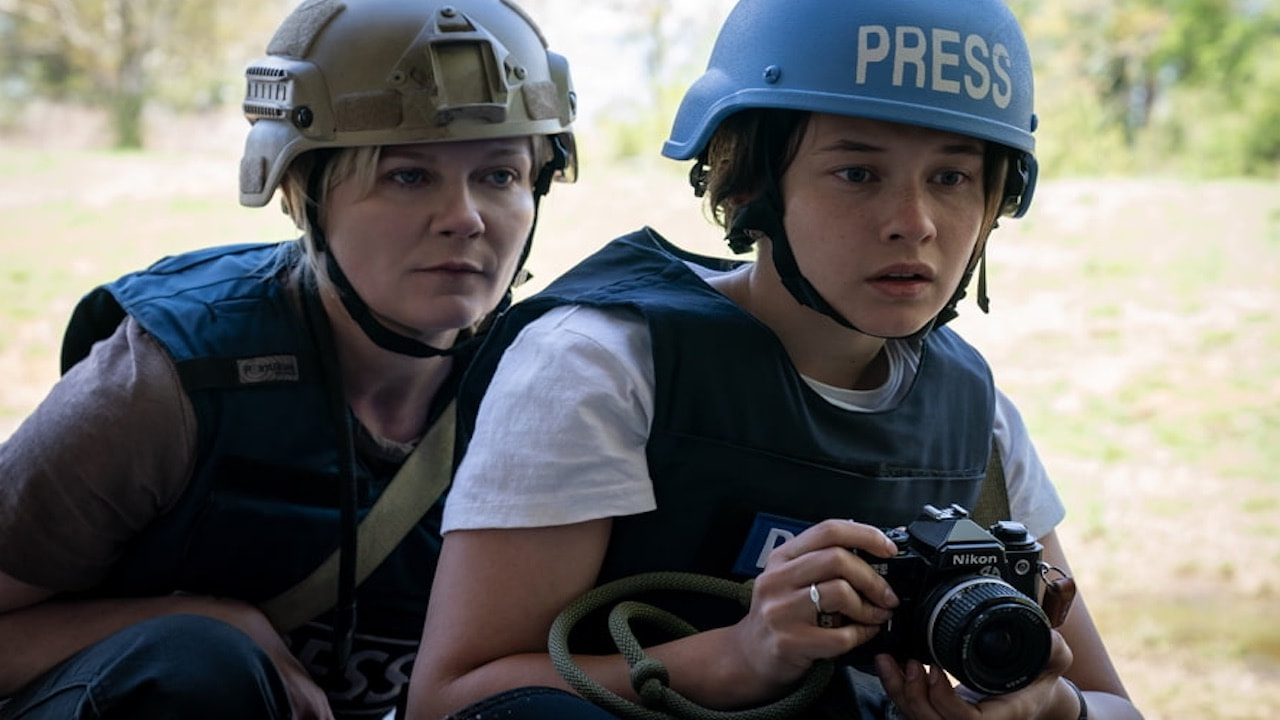
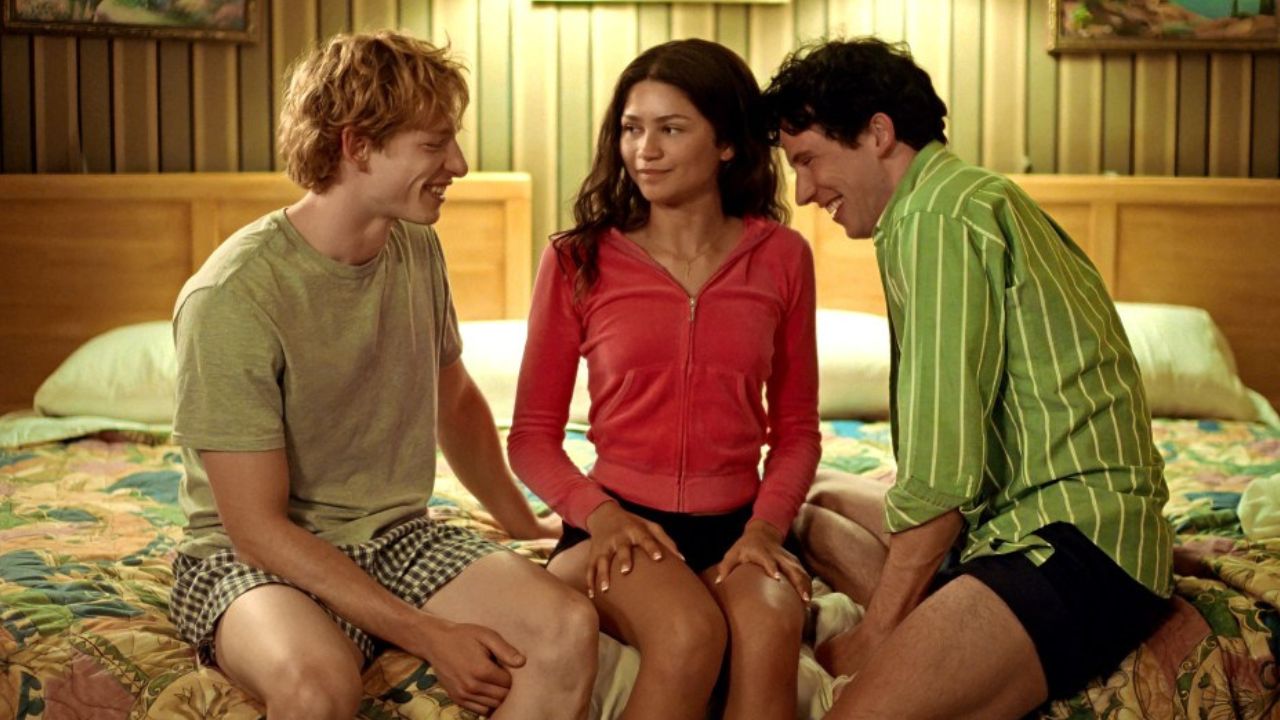
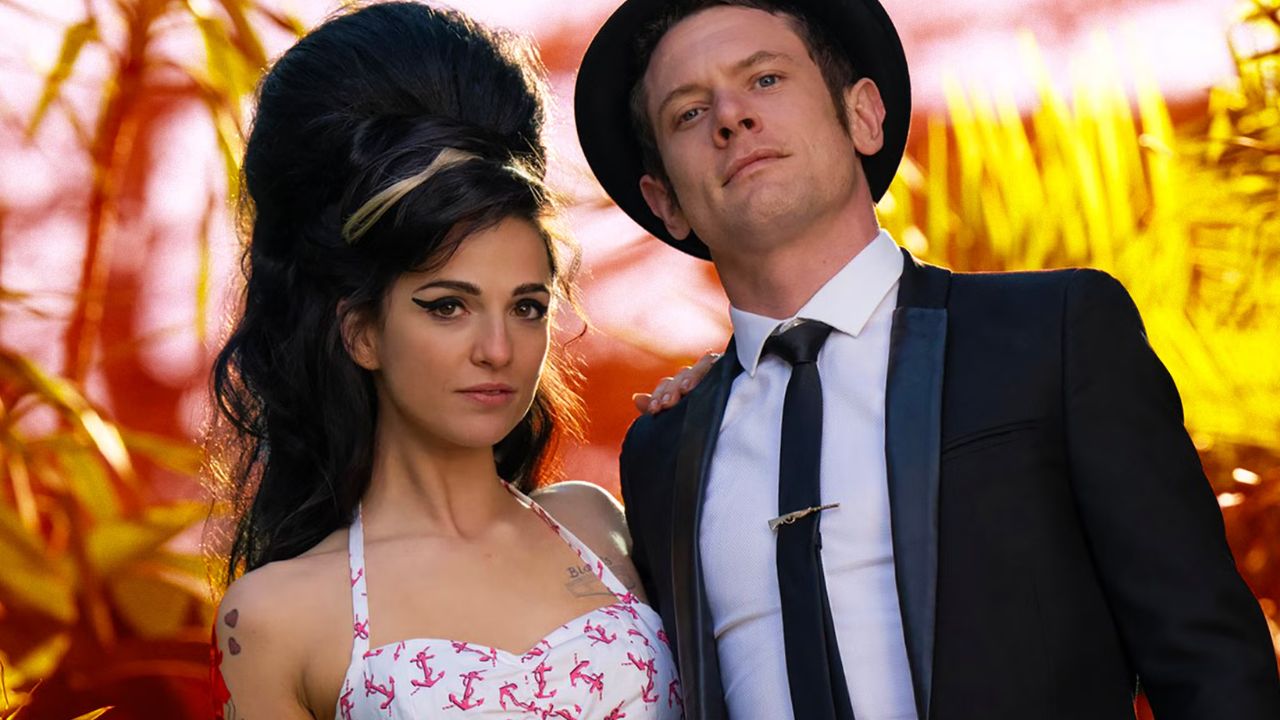
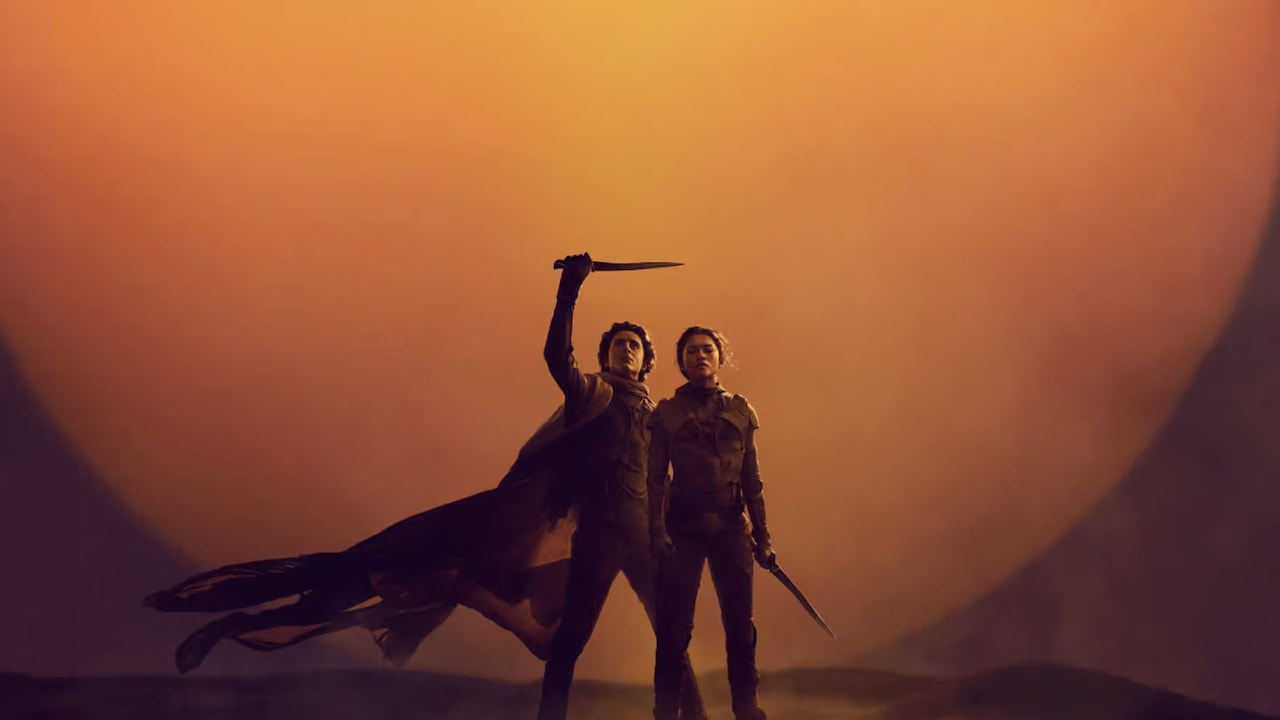
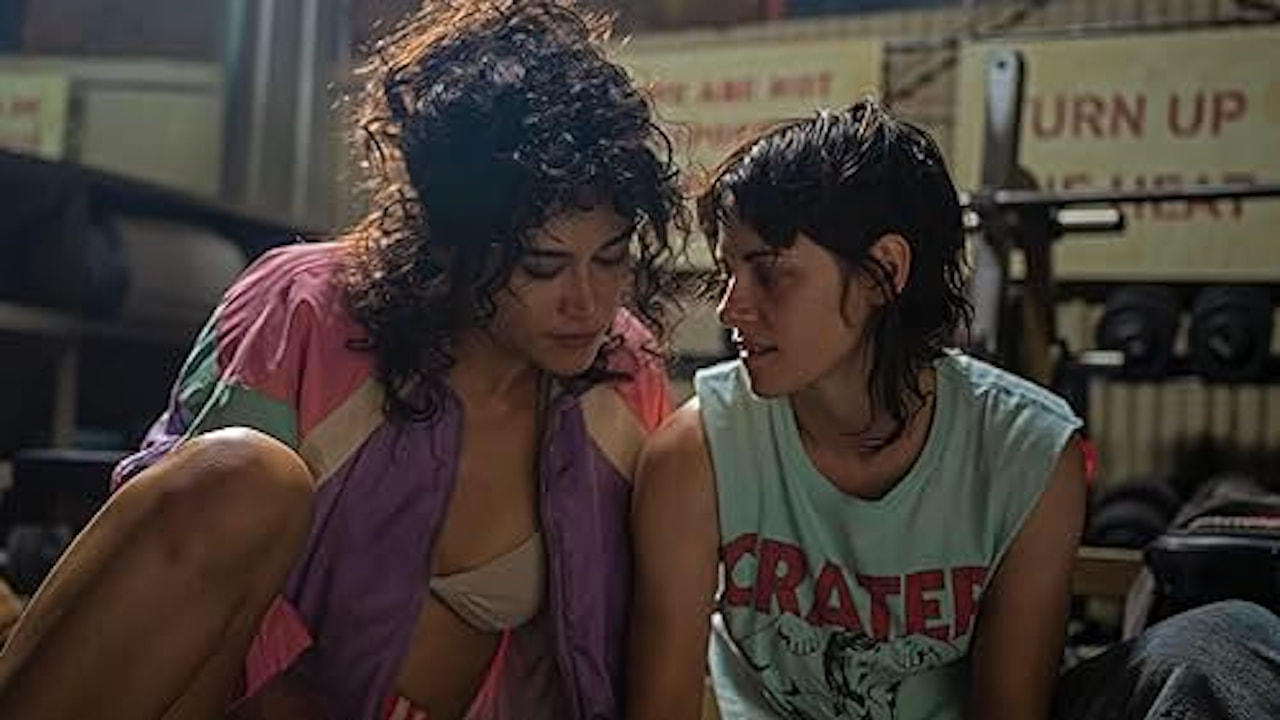

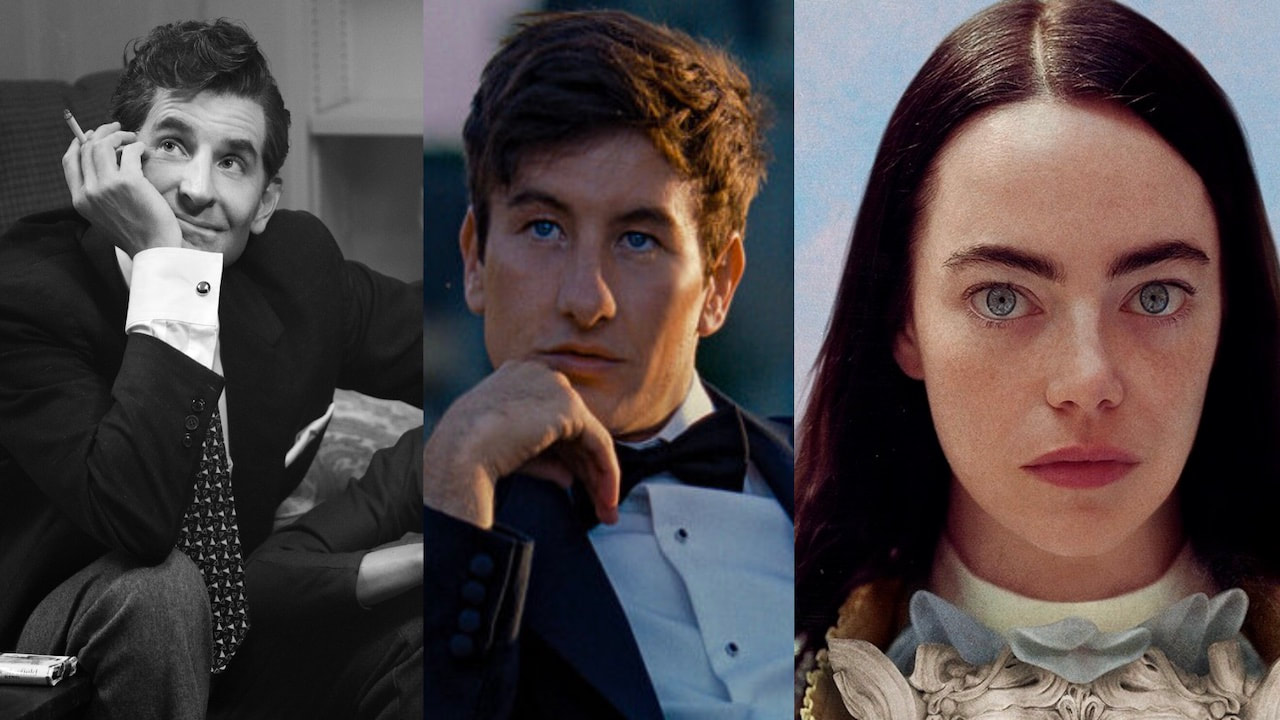
 RSS Feed
RSS Feed